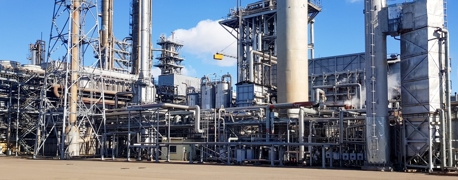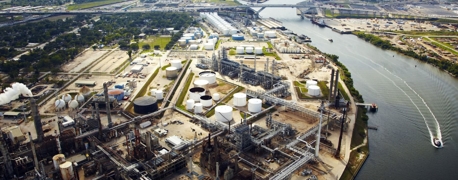5 Most Dangerous Power Plant Companies in Texas

Roughly 11,000 “utility-scale” power plants provide power to US homes, hospitals, businesses, and municipalities nationwide. These plants are owned by fewer than 1,000 power generation companies, which make up less than a third of the total number of utility power companies in the country. Most companies are involved in power distribution—these are the utility companies you’re probably most familiar with.
But the heart of this industry are the power plants burning fuel and generating the power that makes our lives possible.
Unfortunately, recent data has shown that these jobs have a high (and underreported) cost—particularly for the roughly 200 coal-fired plants still operating today. Data aggregated by Our World in Data shows that the fatalities generated by coal power production—black and brown coal—are about 57 deaths per terawatt-hour of production. Put another way, that’s more than twice the fatality rate of all other fuel sources combined.
These figures include deaths from both accidents and air pollution, the scale of which has only become understood in recent years.
Coal Particles Much Smaller Than Researchers Realized
Most power plants release “fine particle pollution,” which are pollutant particles that are too small for the lungs to filter them out. As a result, these pollutants enter the lungs and blood, causing damage to other vital organs. Coal-fired plants, among others, release a particular kind called PM2.5, which is linked to asthma, chronic bronchitis, heart disease, cardiac arrest, low birth rate, and cancer.
For years, scientists assumed that the PM2.5 released by coal power plants was as deadly as any other, but data from 480 coal power plants nationwide demonstrate a fatality rate far higher than previously understood.
The Guardian reported that coal power plants have killed as many as 460,000 people in the last 20 years with PM2.5. Though many coal plants were shut down in favor of natural gas since 2008, hundreds of coal-fired plants are still operational today.
Many of them are in Texas.
5 Deadliest Texas Power Generation Companies
Given that coal-fired plants release deadly particles in the air that affect communities for miles around, it’s fair to assume that the brunt of these deaths is happening to workers and their families, who suffer the most exposure and are the likeliest to live nearby. The Clean Air Task Force uses established federal health impact measurement methods to track the premature deaths and hospitalizations created by PM2.5 in the areas around coal-fired power plants, allowing us to find the deadliest plants in Texas…and who owns them.
#5: San Miguel Electric Cooperative, Inc.
San Miguel Electric owns a station of the same name in Atascosa. San Miguel is a lignite-burning plant, which is a type of brown coal. The plant, with a population of more than 6,000 in a 12-mile radius, contributes to 28 premature deaths and 2 hospitalizations on average every year.
#4: Southwestern Electric Power Co.
Southwestern Electric owns multiple power plants, including the Welsh Power Plant in Titus near Mount Pleasant. This plant is near a relatively large population center: 1,500 people are within 3 miles of the plant, and 42,000 people are within 12 miles. The power plant contributes to 36 premature deaths and 4 hospitalizations every year on average, as well as numerous cases of heart disease and chronic bronchitis.
Southwestern Electric also owns the H.W. Pirkey Power Plant in Harrison, contributing to 13 deaths and 1 hospitalization on average yearly. Southwestern Electric’s final power plant is Flint Creek Power Plant in Arkansas, linked to 7 deaths and 1 hospitalization annually.
#3: Lower Colorado River Authority (LCRA)
The LCRA owns the Fayette Power Project and part of the Sandy Creek Plant, both in Fayette County. Fayette’s release of PM2.5 contributes to 37 premature deaths and 27 hospitalizations on an annual basis. The total financial cost of the illnesses and injuries—including lost days of work—created by the Fayette Power Project is roughly $287 million annually.
#2: NRG Energy
NRG Energy is one of the largest power companies in the United States; in Texas alone, they own two coal-burning plants: W.A. Parish Generating Station and Limestone Generating Station. Combined, the plants generate PM2.5 pollution, contributing to 138 premature deaths and 14 hospitalizations yearly.
#1: Luminant
According to the latest data, the deadliest power company in Texas is Luminant (owned by Vistra Energy). There are three coal-fired power plants owned by Luminant: Martin Lake, Coleto Creek, and Oak Grove. Martin Lake alone has the highest toll of any plant mentioned in this list. Combined, these three plants contribute to 238 premature deaths and 23 hospitalizations on average every year.
Coal-Fired Plant Accident Kills 5
Beyond toxic exposure to fine particle pollution, coal-fired plant accidents can have an even more direct impact on workers.
At the start of major projects, the plant managers brief contractors on the hazards and procedures relevant to their work. On June 29, 2017, the Tampa Electric Company (TECO) neglected to brief contractors on the hazards and procedures necessary to keep themselves safe but allowed the project to move forward anyway.
TECO had hired contractors for maintenance at Big Bend, a coal-fired power plant outside Tampa. The power plant used massive coal furnaces that produced molten slag, a byproduct of burning coal. This slag would fall into a water tank underneath the furnace to cool and solidify. However, one of the water tanks had hardened slag at the top and bottom, which prevented the molten slag from cooling off. Not wanting to take the furnace offline, TECO elected to have their contractors blast the hardened slag with high-pressure hoses while the furnace stayed burning.
The contractors, deprived of the institutional or procedural knowledge that mitigates high-risk work, blew away the hardened slag—causing an explosion of molten slag to enter the tank and spray its occupants. Five people were killed. After years of investigation and litigation, OSHA fined TECO $500,000 for flagrant disregard of OSHA regulations.
It was the same year TECO generated $2.7 billion in revenue.
Symptoms of Fine Particle Pollution
Fine particle pollution is a mixture of soot, heavy metals, sulfur dioxide, and nitrogen oxides—all toxic to our bodies. These particles measure 2.5 microns across, so our natural defenses cannot stop these chemicals from entering our blood and damaging our organs.
The long-term effects of fine particle pollution include:
- Chronic bronchitis
- Heart disease
- Asthma (acute or chronic)
- Some cancers
If you’ve worked at a power plant (or are close to someone who did) and notice these symptoms, get to a doctor as soon as possible for an evaluation. It might be necessary to leave the area to avoid further exposure to toxic air.
Power generation is unquestionably essential, which is why power plant workers need to receive protection and benefits when they fall ill or get injured. Power plant companies make billions from their employees’ hard work, skill, and experience. It’s only fair that the company takes care of them when they suffer the consequences of breathing poison to power the nation.


